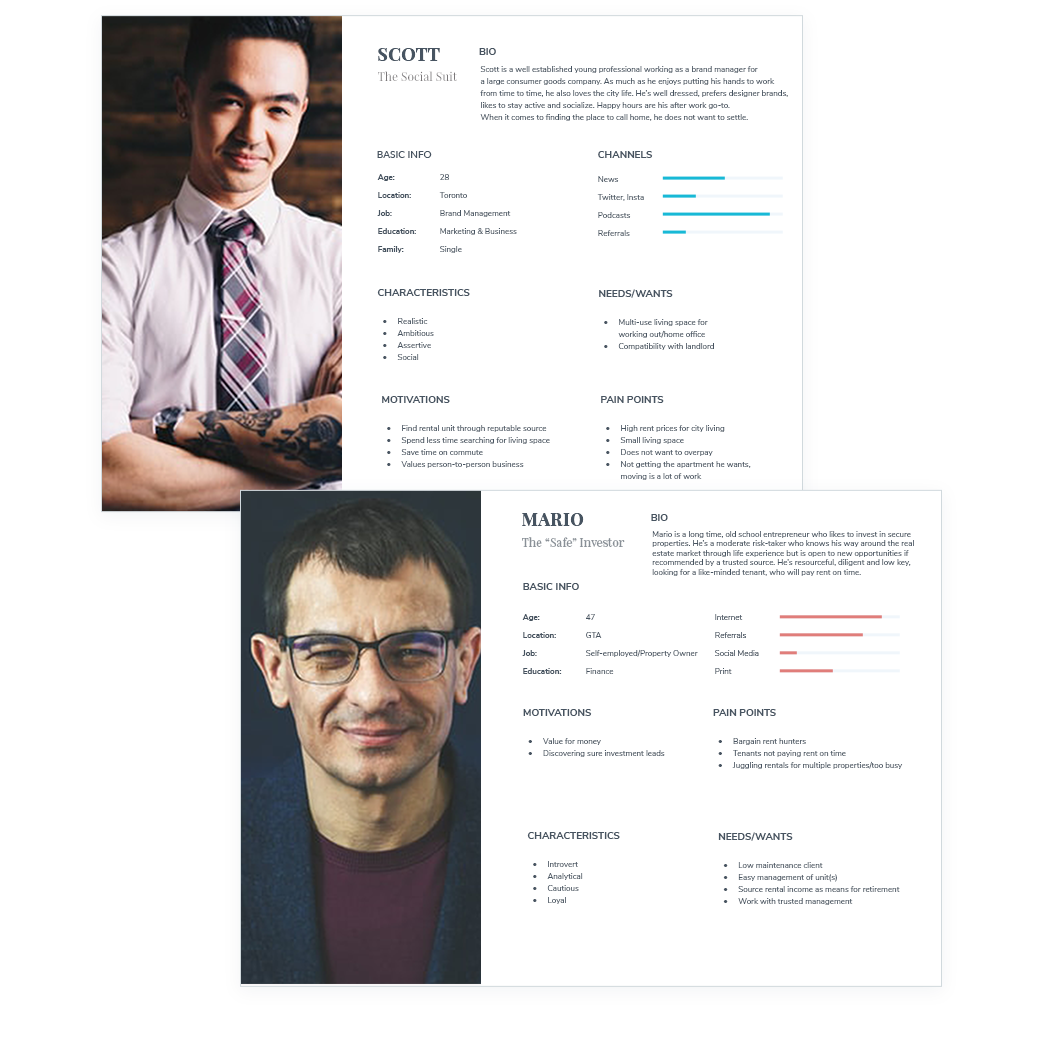RENT READY PROPERTY MANAGEMENT
UX Strategy & Research
DISCLAIMER: By viewing this page, you agree to not download, save, screenshot, copy in any way or redistribute the information listed below.
Project Summary
RENT READY is a new company founded by seasoned real estate professionals dedicated to specializing in residential property management set to launch in 2021/2022. Currently, the business does not have a website but will require one in order for prospective clients to seamlessly browse through available rental listings and price options.
Because of the abundance of information that is associated with property listings and the industry in general, similar company websites are typically overcrowded and overwhelming for the user. Many do not appear to have a face behind the business and appear to target mostly commercial business.
-
Having already developed the branding for Rent Ready, the next step is to research, ideate and iterate a successful strategic design on approach the rental and leasing real estate market for landlords, and potentially tenants.
-
Myself - Project Lead & Designer
The Client
-
Present (Branding Complete Summer 2021)
-
To build a client-friendly website that addresses the needs of its users and showcases a simplified look into an otherwise known intimidating process of obtaining a rental agreement.
User Personas: Tenant & Landlord
Personas were created based on age range, work and criteria users look for when searching for a listing or tenant. The personas helped us determine the customer journey and how the RR website will appeal differently to tenants versus landlords. Our main focus here is how each user type will access the site, i.e. Tenants will focus on searching for specific listing types vs. landlords, who will be most interested in learning more about what RR offers in terms of property management
Opportunities for Conversion - Tenants
These were opportunities presented to the client as an example of what a satisfied user experience can achieve:
-
Provide an email opt-in opportunity where users can add a filtered selection for what they're interested in looking for.
This allows for customization of relevant listings, somewhat similar to emails sent to home buyers, but an even more niche list.
-
Forced registration to view properties can turn potential clients away. Offer this as an alternative option to an email sign up banner. Registration can allow them to save preferences, and provide exclusivity to be the "first-to-know", etc.
-
Online bookings or available date listings can be easily advertised and a sign up option can be provided for specific dates. This reduces back-and-forth email communication. The easier the process, the more pleasant the user experience.
-
Organizing listings within sections and adding title headings that highlight key features or must-haves is key to maintain user’s attention and help keep them on track easily. i.e. "Pet-friendly apartments" or "Rentals with in-unit laundry" (Examples from realtor.com).
Opportunities for Conversion - Landlords
-
When the user enters website, the homepage has a full page banner that provides an option for them to select entry to the website as a Tenant or as a Landlord.
-
Creating a mini-website via third party service such as Linktree, users accessing the RR site via social media can be directed to specific landing pages that they choose to view instead of just a general homepage. This minimizes the effort on their part and gives them exactly what they're looking for.
-
This is a perfect opportunity to provide a resource section for prospective and current clients. Not only is it loads of great content that can be repurposed for social media, but blogs are a great way to build organic credibility for Google and SEO. Referencing other accredited articles on top sites such as Realtor.com is also another great way to create a good backlink trail to the website.
Journey
Maps
The tenant journey map and landlord journey map show how each interaction stage of the process varies for each type of user. Although they may have common similarities, each user type initially accesses the RR website with different goals in mind.
These goals pave the way for how the prospective tenant will navigate the RR website as opposed to how landlords will navigate it.
Awareness/Motivation: Search for a new apartment or to find a new tenant
Search: The search for a new apartment or for a new tenant
Discovery: Finding desired listings or receiving tenant applications
Conversion: Making the decision on an apartment or deciding which tenant to rent to
Loyalty: Signing the lease and revenue for landlord
Customer Journey Map - Landlord
Customer Journey Map - Tenant
Competition
Since most property management companies all share expected similarities, positioning a unique stance that RR can provide is beneficial, especially if integrated within the design and marketing of the site.
For example, the previous realtor reputation of RR’s founder is a great added value for building relationships and trust for both landlord and tenant clientele.
-
Next Steps
User Flows
Setting specific user goal/task scenarios for the website and ensuring that they can be
easily met
Wireframing
Focused on targeting both landlords and tenants
Content
Constructing content to address both tenants and landlords, along with appropriate copy that entices calls to action so that users can achieve the goals that RR intends for them to complete





